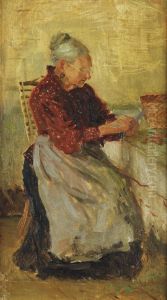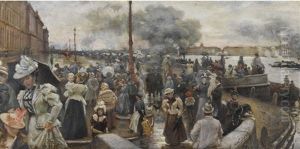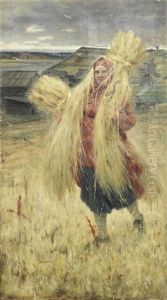Nikolai Avenirovich Shabunin Paintings
Nikolai Avenirovich Shabunin was a Russian painter known for his contributions to the genre of landscape painting in the late 19th century. Born in 1857, Shabunin's artistic journey began in an era when Russian art was experiencing significant transformations, moving towards more realistic and emotionally resonant depictions of life, nature, and the social conditions of the time. Despite his relatively short life, Shabunin managed to leave a mark on the Russian art scene, particularly through his landscape works that captured the unique beauty of the Russian countryside.
Shabunin's education in art was grounded in the rigorous training provided by the Imperial Academy of Arts in Saint Petersburg, a premier institution for the arts in Russia, where he honed his skills and developed a keen eye for detail and composition. His studies there allowed him to explore various painting techniques and to be exposed to the works of both Russian and European masters, influences that would later be reflected in his own unique style. Shabunin's landscapes are characterized by their vibrant color palette, meticulous attention to natural details, and the ability to evoke a sense of tranquility and profound connection with nature.
Throughout his career, Shabunin exhibited his works in various prestigious venues, and his paintings were well received by critics and the public alike. His ability to capture the ephemeral beauty of nature, from the serene waters of Russian lakes to the expansive views of its forests and fields, earned him recognition as a significant figure in the Russian landscape painting tradition. Despite his early death in 1888 at the age of 31, Shabunin's legacy in Russian art persists, with his works being preserved in museums and collections across Russia and beyond, serving as a testament to his artistic vision and his deep love for the natural world.
Shabunin's life and work were emblematic of a period in Russian art that sought to express a deeper realism and connection with the people and landscapes of Russia. His dedication to capturing the essence of Russia's natural beauty, combined with his technical skill and emotional depth, made him a pivotal figure in the development of Russian landscape art. Although his career was brief, his influence on the genre and on subsequent generations of Russian artists remains significant, highlighting his role in the broader narrative of Russian cultural and artistic history.






